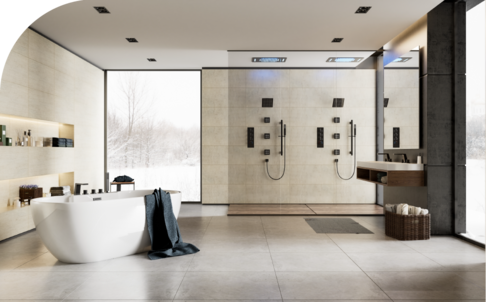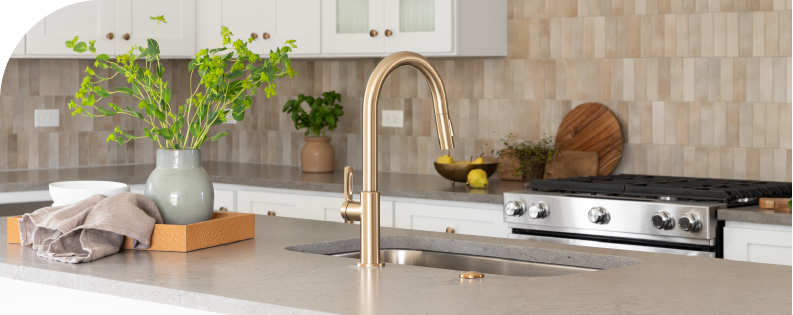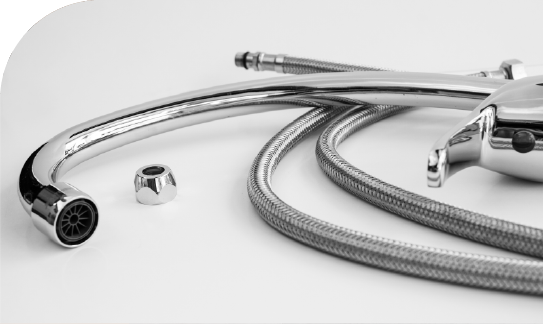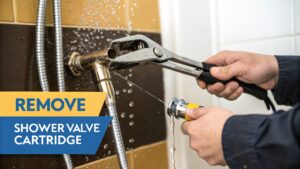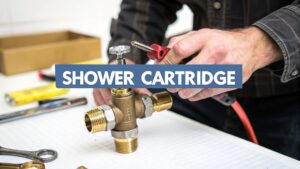So, you’ve just left the tattoo shop with some incredible new ink. The buzz of the needle is gone, but another question is probably buzzing in your mind: how long after a tattoo can you shower?
The short and sweet answer is you need to wait at least 24 hours. I know, it feels like a long time, but this initial window is absolutely crucial for letting your skin kickstart the healing process without any interruptions.
The First 24 Hours: Your Most Critical Healing Window
It helps to think of your new tattoo less as a piece of art (for now) and more as what it is: an open wound. The tattooing process creates thousands of tiny punctures in your skin to deposit ink into the dermis. Your body immediately goes into defense mode, sending plasma to the surface to form a protective layer. This first phase sets the stage for everything that follows.
That first day is when your tattoo is at its most vulnerable. Your artist wrapped it for a good reason—to shield it from airborne bacteria, friction from your clothes, and any accidental bumps. Most artists will tell you to leave that initial wrap on for at least a few hours. Trust me on this: resist the temptation to peek. Leaving it alone is non-negotiable for a clean start to healing.
Why Waiting Is So Important
Jumping into the shower too soon can cause some serious problems. You’re essentially exposing a fresh wound to water, steam, and all the lovely bacteria that can hang out in a bathroom.
Here are the main things you want to avoid:
- Bacterial Infection: Your tap water isn’t sterile. Getting bacteria in the wound can lead to redness, swelling, pus, and, in a worst-case scenario, permanent damage to your new art.
- Ink Issues: Soaking a brand-new tattoo can oversaturate the skin. This can cause the ink to “leach” or spread out, which is how you end up with blurry lines and a faded look right from the start.
- Scabbing Problems: Getting the area wet too early can mess with the natural scabbing process. It might lead to thick, heavy scabs that, when they inevitably fall off, can pull ink right out with them.
Waiting the full 24 hours gives your skin the head start it needs to seal up that outermost layer. It’s a simple act of patience that drastically cuts down the risk of infection and helps your ink heal as crisply as it looked on day one.
Before you hop in that first shower, it’s a good idea to have a quick reference for the days ahead.
New Tattoo Showering Timeline At a Glance
Here’s a simple table to guide you through showering during that first, critical week of healing.
| Timeframe | Can You Shower? | Key Precaution |
|---|---|---|
| First 24 Hours | No | Keep the tattoo completely dry and covered as your artist instructed. |
| Days 2-3 | Yes, carefully | Quick, lukewarm showers only. No direct water pressure on the tattoo. |
| Days 4-7 | Yes, with caution | Continue with quick, gentle showers. Avoid soaking or submerging the area. |
This timeline is a general guide. Always remember that healing can vary from person to person, so listening to your body—and the specific tattoo aftercare instructions from your artist—is the most important thing you can do.
Navigating Your First Shower With New Ink
So, you’ve made it past the initial 24-hour waiting period. Awesome. But now comes the slightly nerve-wracking part: that first shower with your new tattoo. I get it. The goal here is simple: get clean without messing up your fresh ink. It all comes down to being prepared and knowing the right technique to protect that healing skin.
Let’s talk about the two biggest enemies of a new tattoo in the shower: temperature and pressure. Steaming hot showers are a definite no-go. The heat can open up your pores, which might cause some of that precious ink to leach out. On the flip side, high water pressure can feel like a sandblaster on what is essentially an open wound. You’re aiming for lukewarm water—just warm enough to be comfortable.
Preparing for a Gentle Wash
Before you even think about turning on the faucet, get everything you need within arm’s reach. You’ll want a mild, fragrance-free, antibacterial soap. Seriously, skip the fancy body washes with strong scents or harsh chemicals. They can cause a world of irritation and throw a wrench in the healing process.
Your hands are the only tools you need. Put away the washcloth, loofah, or sponge. They’re far too abrasive for healing skin and can be breeding grounds for bacteria, which is the last thing you want near your tattoo.
Key Takeaway: Your first shower should be quick, cool, and gentle. I always tell my clients to aim for under 10 minutes. This minimizes moisture exposure and stops the skin from getting too waterlogged.
This image is a great visual reminder of the golden rule for that first shower.
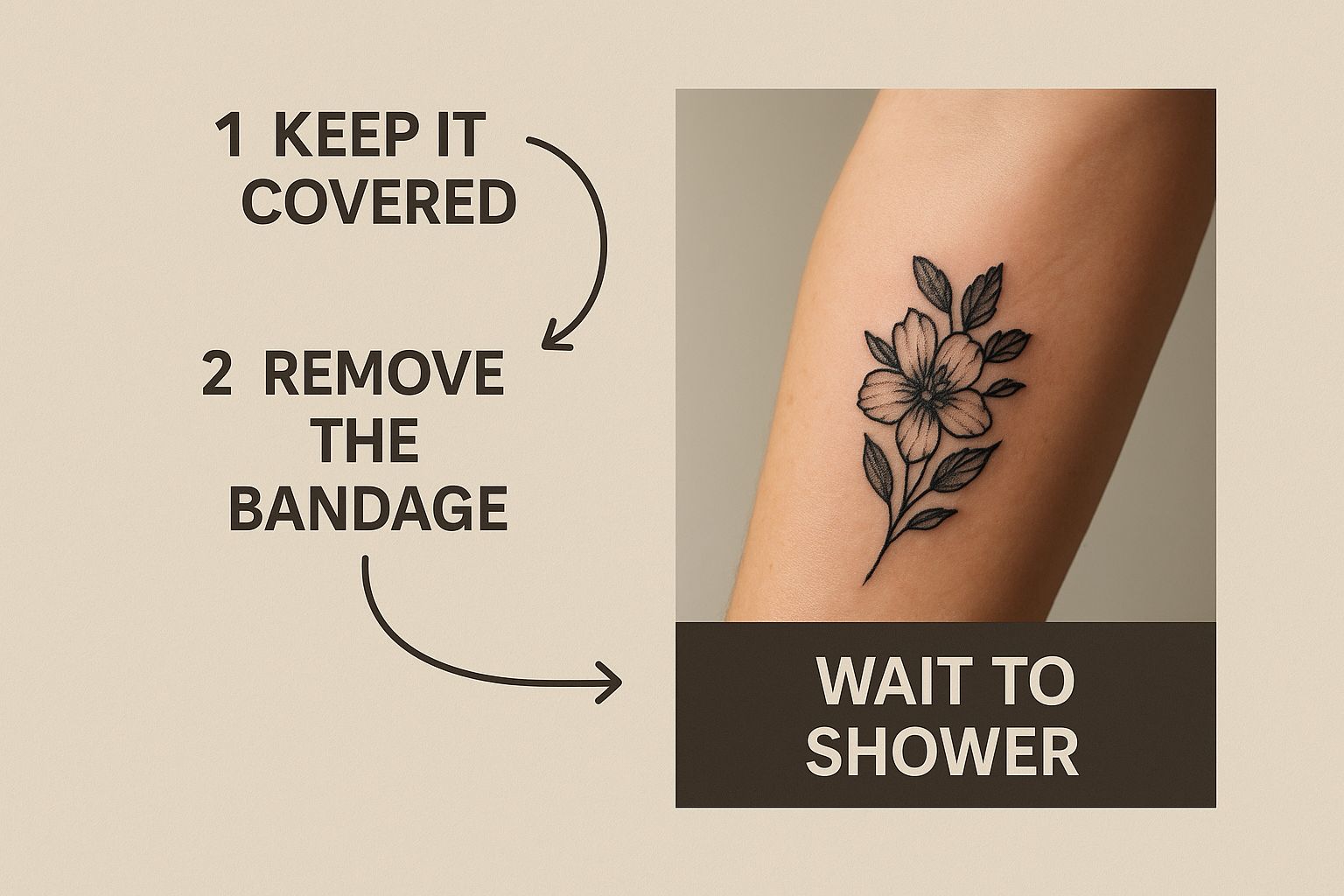
As you can see, patience is everything. Giving your tattoo that initial time to start healing before getting it wet is non-negotiable.
The Right Washing Technique
Once you’re in the shower, don’t let the water spray directly onto your new ink. The best approach is to let it run over the area indirectly.
Here’s what to do:
- Lather up the soap in your hands first.
- Gently apply the lather to your tattoo using just your fingertips.
- Use a slow, circular motion. No scrubbing!
For a deeper dive into the timing and process, our guide on when you can shower after a tattoo has even more detail.
When it’s time to rinse, cup your hands and let lukewarm water flow gently over the tattoo to wash away the soap. After a quick, gentle rinse, you’re done. Hop out and immediately pat the area dry with a clean paper towel—don’t rub! A regular bath towel can hold onto bacteria, so a fresh paper towel is your safest bet.
Setting Up a Tattoo-Safe Shower Environment
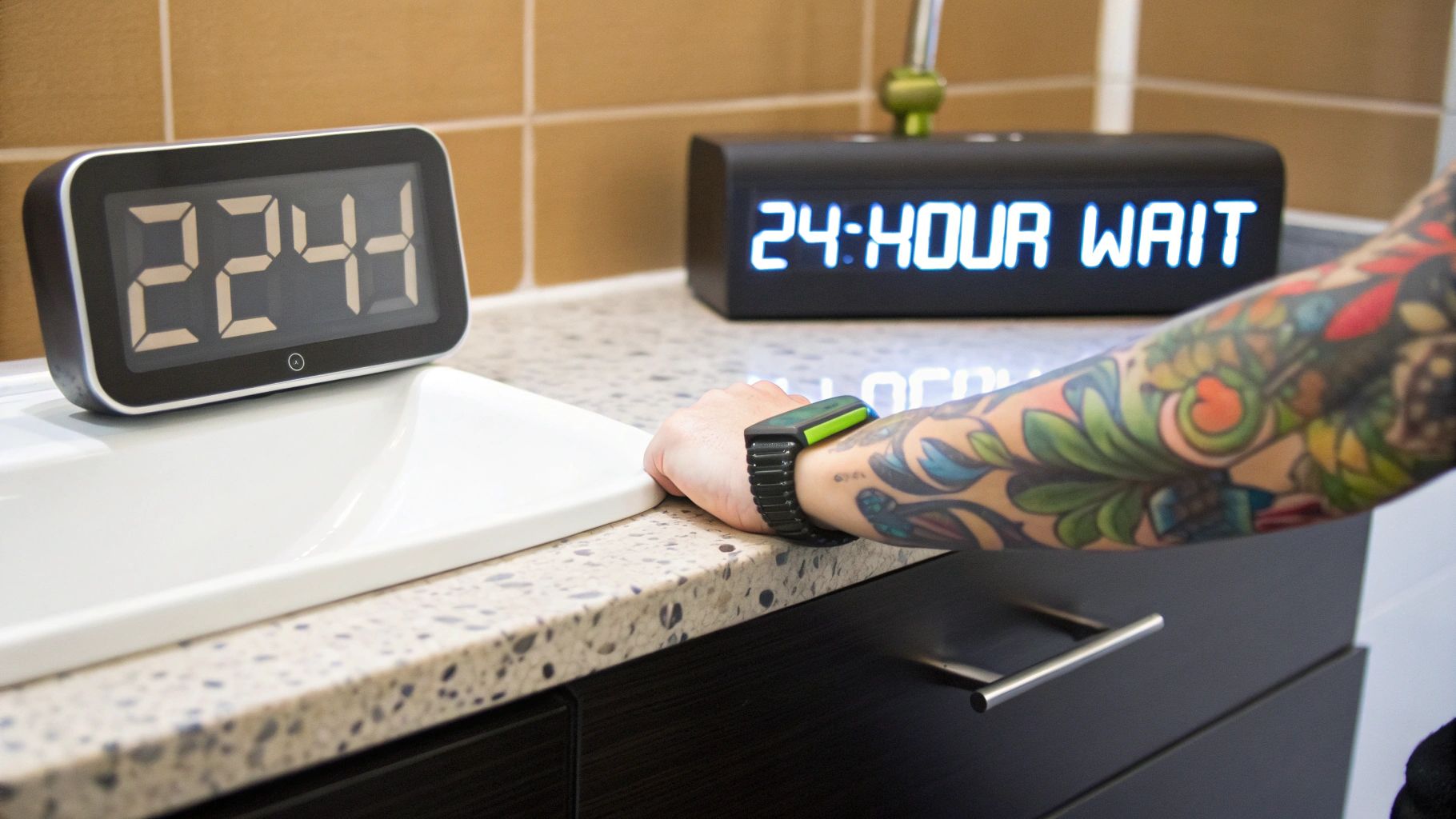
Alright, so you know when you can finally get back in the shower. Now, let’s talk about how. Your standard shower, with its unpredictable pressure and sudden temperature spikes, can be a real minefield for a healing tattoo. The key is to create a gentler, more controlled environment to protect your new ink from getting blasted or irritated.
This is where your shower fixtures can be a total lifesaver. A quality shower and tub faucet set gives you the precision you need over both water temperature and pressure. That means no more surprise jets of scalding water or icy blasts hitting your sensitive skin—something that’s absolutely critical when you’re trying to care for fresh artwork.
Upgrading Your Shower for Better Aftercare
If you’re serious about aftercare, a rain shower head with handheld sprayer is a fantastic investment. Honestly, this combination is a game-changer for gently cleaning both your body and your new tattoo. You get the best of both worlds: the soft, calming rainfall from the main head for the rest of your body, and the handheld wand for carefully rinsing the tattooed area.
This setup gives you complete control over where the water goes, ensuring you never hit the tattoo with a direct, harsh stream.
- Gentle Rinsing: Use the handheld sprayer to aim water above the tattoo, letting it cascade down and over the ink. No direct hits.
- Controlled Pressure: The soft flow from a rain shower head is much less likely to irritate the delicate, healing skin.
- Total Management: You can clean yourself effectively without putting your new art—and your investment—at risk.
The goal isn’t just to get clean. It’s to do it in a way that helps your body heal properly. A well-designed shower system lets you manage every part of the process, from the temperature to the flow.
For instance, a modern shower system gives you the stability you need, while a dedicated handheld sprayer offers the gentle precision required for delicate aftercare. And don’t forget the rest of your shower’s hygiene. Clean glass shower doors help create a more sterile space, which is always a good thing. It’s also vital to keep the shower head itself clean to prevent bacteria from building up and spraying onto your healing skin. You can learn more in our guide on how to clean a shower head.
The Crucial Post-Shower Aftercare Routine
Alright, you’ve made it through that first nerve-wracking shower. But don’t relax just yet—what you do in the next few minutes is just as critical for your new ink. The first rule is simple, but people mess it up all the time: never, ever rub your new tattoo dry.
Your regular bath towel is a no-go. It’s way too rough for healing skin and can be a breeding ground for bacteria. Instead, grab a fresh, disposable paper towel and very gently pat the area dry. You’re just trying to blot up the excess water, not scrub it. Zero friction is the goal.
Applying Aftercare Lotion The Right Way
Once your tattoo is completely air-dried—and I mean bone-dry, with no lingering dampness—it’s time for lotion. This is where the “less is more” philosophy really comes into play. You need an incredibly thin, breathable layer of the aftercare product your artist recommended.
One of the most common mistakes I see is people slathering on ointment like they’re frosting a cake. This suffocates the skin, trapping moisture against the fresh wound. That soggy environment is a perfect playground for bacteria and can lead to gooey, thick scabs that pull out ink.
A proper aftercare routine is all about balance. You want to keep the skin hydrated enough to prevent it from getting tight and cracking, but you also need to let it breathe so it can heal naturally.
While standard advice often says to wait 24 hours for that first wash, every artist and every tattoo is a bit different. Some might give you the green light to shower as early as 4 hours post-session, as long as you use the right antibacterial soap and let the tattoo air out completely afterward.
Post-Shower Best Practices
Here’s a quick rundown to make sure you get it right every time:
- Be Patient: After patting the tattoo, give it another 5-10 minutes to air dry before even thinking about lotion. You need to be sure all the moisture has evaporated.
- A Little Goes a Long Way: Use a tiny, pea-sized amount of lotion. Gently massage it in until it completely disappears. If it looks greasy or shiny, you’ve used too much.
- Mind Your Water Pressure: Low water pressure can be more than just annoying; it can impact overall household hygiene. If you’re dealing with a weak stream, it might be worth looking into. Check out our guide on how to increase water pressure in your shower for some easy fixes.
Nailing this simple routine helps ensure your tattoo heals cleanly and the artwork stays crisp. You invested in the art; now invest in the healing.
Common Showering Mistakes That Can Ruin Your Tattoo
It’s incredibly easy to accidentally sabotage your new ink in the shower. Even if you’ve figured out how long after a tattoo can you shower, simple mistakes during the wash itself can seriously set back your healing. Think of this as your essential “what not to do” guide—a rundown of the common pitfalls that can mess with your investment.
One of the biggest culprits? The long, steamy shower. I get it, they feel amazing. But for your healing skin, all that hot steam is a problem. It can open up your pores and potentially cause fresh ink to leach out. The result? Faded colors and blurred lines right from the get-go. A quick, lukewarm rinse is always the safer, smarter bet.
Avoiding Damage to Your New Ink
Beyond the water temperature, the products you grab matter immensely. That fancy, heavily scented body wash you love? Put it aside for a few weeks. Harsh soaps are loaded with chemicals and fragrances that can cause serious irritation to what is, essentially, an open wound. You’ll know it if you use one—it’ll probably sting, turn excessively red, and disrupt the whole healing process. Always stick to a mild, fragrance-free antibacterial soap.
The most critical rule, however, is this: no soaking your new tattoo. This is completely non-negotiable for at least two to three weeks.
- No Baths: Submerging your fresh tattoo in a tub is a recipe for disaster. You’re just asking for a bacterial infection.
- No Hot Tubs: The combination of high heat and harsh chemicals in a hot tub is extremely damaging to healing skin and ink.
- No Swimming: This includes pools, lakes, and oceans. All of them are teeming with microorganisms that can cause a nasty infection.
Soaking doesn’t just invite infection; it also oversaturates the skin. This can lead to thick, heavy scabs that pull the ink right out when they eventually fall off.
Knowing these risks is half the battle. Every choice you make in the bathroom for the next few weeks can either help your tattoo heal beautifully or hinder the process. Speaking of choices, long showers don’t just put your tattoo at risk—they also use a surprising amount of water. If you’re curious, you can learn more about how many gallons of water a shower uses in our detailed article. Keep it short, keep it clean, and keep it safe.
Your Tattoo Aftercare Questions Answered
We’ve walked through the timeline, the right techniques, and the pitfalls to avoid. But let’s be real—when you’re standing there with a fresh tattoo, specific questions always seem to pop up. It’s completely normal.
Here are some quick, straightforward answers to the most common questions we get about showering and healing that new piece of art.
What if My Artist Gave Me Different Showering Advice?
Listen to them. Period. Your artist’s advice is the gold standard.
They know the specifics of your piece—the size, how saturated the ink is, where it is on your body, and what kind of bandage they used. While these general guides are a fantastic starting point, their personalized instructions are tailored specifically to your tattoo and should be your final word.
Can I Use a High-Pressure Shower Head?
I’d strongly advise against it. Even if you’re a pro at avoiding a direct hit, high pressure kicks up a ton of steam and splashback, both of which can easily irritate a healing tattoo.
It’s much safer to switch to a lower, gentler pressure setting for your whole shower. A versatile shower and tub faucet set can be a lifesaver here, giving you easy control over the flow and temperature. For even more precision, something like a quality rain shower head with handheld lets you rinse around the area without any harsh spray.
The bottom line is control. The more you can manage the water flow and temperature, the safer your shower will be for your new ink. A good shower and tub faucet set gives you that essential control.
How Long Do I Need This Special Shower Routine?
Plan on sticking with this gentle routine for at least two to four weeks. You’ll want to continue until your tattoo has completely finished its initial peeling phase and the skin beneath looks smooth, not shiny or scaly.
Even when it looks healed on the surface, remember the deeper layers are still mending. To be on the safe side and keep that ink looking vibrant for years to come, it’s a smart move to keep avoiding harsh soaps and direct, high-pressure water for at least a full month. For more general advice on maintaining your space, you can find a variety of bathroom tips and tricks to keep things running smoothly.
What Are Signs I Washed My Tattoo Too Harshly?
Your body will tell you. If you notice any of these signs right after a shower, you might be going too hard:
- Lingering redness that doesn’t fade quickly
- A stinging sensation on the tattooed skin
- Excessive peeling or skin flaking off in large pieces
A tattoo that’s being cared for properly shouldn’t feel irritated after a gentle wash. Another red flag is if the skin looks overly shiny and “weepy” long after you’ve dried it—that can be a sign of over-moisturizing. When in doubt, dial back the water pressure, check the temperature, and never hesitate to send a photo to your artist if you’re concerned.
At Cranach, we believe a great shower experience is about more than just getting clean—it’s about having the control to create a safe and healthy environment for every need. Upgrade your bathroom with a system designed for precision and comfort.

